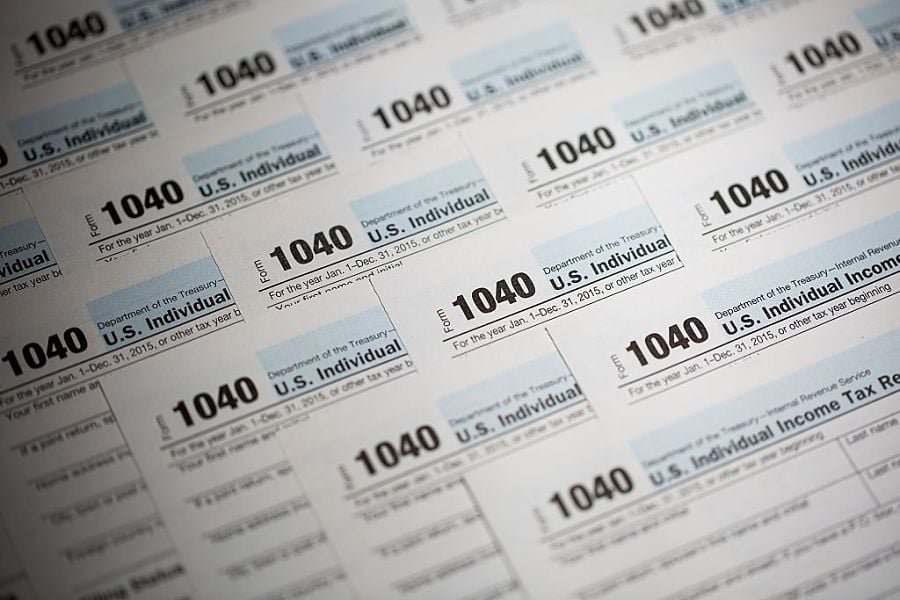

As you read this in early February, your clients are receiving their annual 1099-R forms that report distributions taken in 2020 from their IRAs and other retirement accounts.
Once they look the forms over (or their tax preparer does), they'll be on the phone with you complaining about the horrible “errors” on the form. These are probably not mistakes or oversights, and do not need correcting. But your clients do need an explanation, so advisers should be prepared with answers.
What clients will be calling about won’t be what’s on their 1099-R form, but rather what’s not on there.
While Form 1099-R provides valuable information, it does not paint a full picture. IRA owners need to recognize that some transactions will not appear on the 1099-R, and that the form can give an incomplete accounting of the full tax consequences of taking an IRA distribution.
Don't panic if the Form 1099-R doesn't match exactly with what the IRA owner expects. Just be sure to advise the client to take the necessary steps on their federal income tax return to report the transaction properly.
The CARES Act brought us two new instances where extra tax reporting will be necessary.
The CARES Act waived 2020 required minimum distributions, but some people took them before they knew that. In Notice 2020-51, the IRS allowed IRA owners who had already taken their RMD to repay those funds.
IRA owners who were thinking everything had been "zeroed out" after repayment might be surprised to discover that Form 1099-R still shows the RMD as a taxable distribution, since it only shows the distribution and not the rollback of those funds.
Clients will think something is wrong and be worried that IRS, which also receives a copy of the 1099-R, will think this is a taxable distribution. But the form doesn't tell the whole story. It’s up to the client or their CPA to fill in the rest and show the repayment of the RMD that negated the taxable distribution.
Adding to the confusion, there is no special code for rollovers, so the distribution will likely be reported as a normal distribution. This might look erroneous to an IRA owner, but it makes sense. A rollover starts with a distribution to the IRA owner. What the IRA owner does with those dollars is unknown. Upon distribution, the custodian has no idea if a rollover will even happen.
It's up the IRA owner to indicate a rollover on their tax return, and that's relatively easy. The total distribution from the IRA must be indicated on line 4a of Form 1040 when filing the federal income tax return. Then enter “Rollover” next to line 4b. If the total distribution was rolled over, enter zero on line 4b. Otherwise, enter the portion not rolled over on line 4b.
Note that the receiving custodian will furnish the IRA owner and the IRS with Form 5498, which will officially confirm the rollover amount. It is not necessary to file Form 5498 with the tax return.
Many individuals took advantage of the special coronavirus-related distribution tax break that was only available for 2020. Penalty-free distributions were permitted from IRAs and plans, with the option to spread the taxation ratably over three years.
Those who took a CRD may be surprised when they receive a 2020 Form 1099-R with no special coding. This is also something that needs to be handled on the tax return.
An individual who received a CRD in 2020 will need to file the IRS' new Form 8915-E to report the distribution and get relief from the 10% penalty. Form 8915-E also includes a box that can be checked to elect out of the three-year spread of income if the client wishes to include all the income in 2020. Some may want to do that if their 2020 income was low and they expect 2021 and 2022 to be higher-income years.
Also, CRD income can be reduced or eliminated by repaying those funds to the IRA or company plan. CRDs can be repaid within three years from the day after the CRD was taken. The repayments would also be reported on Form 8915-E.
Alert clients and tax advisers that the 1099-R forms they are receiving might not be telling the whole story. Provide them with the missing details so they can include them on their tax returns.
For more information on Ed Slott and Ed Slott’s 2-Day IRA Workshop, please visit www.IRAhelp.com.

While industry statistics pointing to a succession crisis can cause alarm, advisor-owners should be free to consider a middle path between staying solo and catching the surging wave of M&A.

New joint research by T. Rowe Price, MIT, and Stanford University finds more diverse asset allocations among older participants.

With its asset pipeline bursting past $13 billion, Farther is looking to build more momentum with three new managing directors.

A Department of Labor proposal to scrap a regulatory provision under ERISA could create uncertainty for fiduciaries, the trade association argues.

"We continue to feel confident about our ability to capture 90%," LPL CEO Rich Steinmeier told analysts during the firm's 2nd quarter earnings call.
Orion's Tom Wilson on delivering coordinated, high-touch service in a world where returns alone no longer set you apart.
Barely a decade old, registered index-linked annuities have quickly surged in popularity, thanks to their unique blend of protection and growth potential—an appealing option for investors looking to chart a steadier course through today's choppy market waters, says Myles Lambert, Brighthouse Financial.
